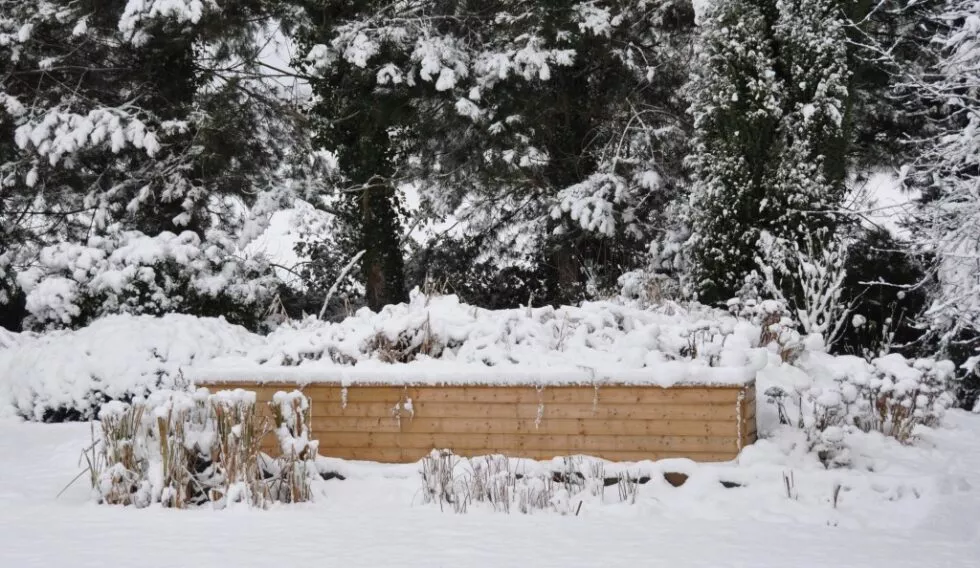Planted filters, equally effective in winter

The winter resilience of planted filters
Planted filters, also known as phyto-purification systems, are installations that use plants, such as reeds, to purify water naturally. Even during the winter months, when temperatures drop and snow covers the ground, these systems continue to play their role.
Look at the photo of this winter landscape. At first glance, you might think that the biological filtration process is frozen, just like the surrounding environment. In these climatic conditions, one can legitimately wonder whether this type of system can still fulfil its essential function. The answer is yes, and it is fascinating to understand how this is possible.
A planted filter that performs well even at sub-zero temperatures
Recent studies, such as those conducted by the macrophytes and water treatment group of the Rhône Méditerranée Corse Water Agency in 2005, have provided evidence of the robustness of these systems even in difficult climatic conditions.
Imagine a particularly harsh winter, with temperatures plunging to -15°C. Under such conditions, one could reasonably doubt the ability of any biological system to function optimally. However, research has shown that reed planted filters continue to effectively treat suspended and organic matter.
This resilience is explained by the structure and functioning of the filters. Life goes on under the snowy surface. The roots of the reeds, although less active than in summer, continue to provide a habitat for the microorganisms needed to break down pollutants. These microorganisms are the real heroes of the process: they transform organic matter and improve water quality, even in freezing conditions.
The physical design of the system also plays a crucial role. The substrate used, often composed of gravel and sand, promotes water circulation that prevents freezing. This ensures continuity in water treatment, even when temperatures are extremely low or even below zero. In addition, the layer of snow that often covers these systems acts as a natural insulation, helping to maintain a slightly higher temperature in the filter, which is favourable for microbiological activity.
Factors that reinforce thermal insulation
Nature as an ally
The performance of reed planted filters in winter can be attributed to a combination of natural and technical factors that ensure their resilience in freezing temperatures. One of the main elements of this efficiency is the natural cover formed by the reeds themselves. Even in winter, the stems and rhizomes of the reeds offer a certain amount of protection against the cold, acting as a barrier that minimises the effect of extreme temperatures on the system.
This plant cover plays an important role in insulating the substrate and the microorganisms involved in water treatment. It creates a microclimate within the filter where temperatures remain slightly higher than the ambient air. This ensures that essential biological processes continue to take place without interruption, even in extreme cold.
Mulching: a natural barrier against frost
To reinforce this natural resistance, additional techniques can be implemented. One of the most effective methods is to install a mulching system on the surface of the aggregates. This mulch, which can be made of organic materials such as wood chips or straw, adds an extra insulating layer. It acts as a thermal blanket that prevents frost from penetrating too deeply into the substrate, thus protecting the microorganisms and the reed root system.
Wastewater as an ally
The remarkable performance of the planted filters in winter is also due to the ingenious thermal management of the wastewater that feeds them. This water arrives at the Sanitation Garden at a relatively mild temperature of around 10°C. This relative warmth plays an important role: it prevents the formation of ice, both at the outlet of the pipes and on the surface of the filters, thus ensuring a continuous and regular flow through the system. This means that, even when outside temperatures drop sharply, the filtration process is not impeded, guaranteeing effective purification.
Snow: a natural covering
Snow, often perceived as a winter obstacle, is a valuable ally for planted filters. When it covers the plants, it does not impede the functioning of the system. In fact, snow has a high insulating power that contributes to the creation of a thermal gradient. This gradient ensures that the lower part of the filter remains warm and protected, while the surface, although cold and reflective, acts as a natural blanket. This thermal insulation provided by the snow helps maintain optimal conditions for the biological processes at work in the filter.
Ingenious piping
The ingenuity of the filtration system is also in the design of the pipes used to supply the planted filters. The supply pipes are designed to minimise exposure to the open air, with only their outlets visible on the outside. This design considerably reduces the risk of wastewater freezing, even in periods of intense cold. By protecting the majority of the system from direct exposure to cold temperatures, the designers have ensured that the filters operate smoothly and uninterrupted, thus enabling constant water purification.
Conclusion
In conclusion, phyto-purification in winter demonstrates impressive resilience thanks to a combination of natural and technical factors. Reed planted filters are not just an ecological alternative; they represent a model of sustainability and efficiency, capable of adapting to climatic variations while ensuring optimal water quality throughout the year.

